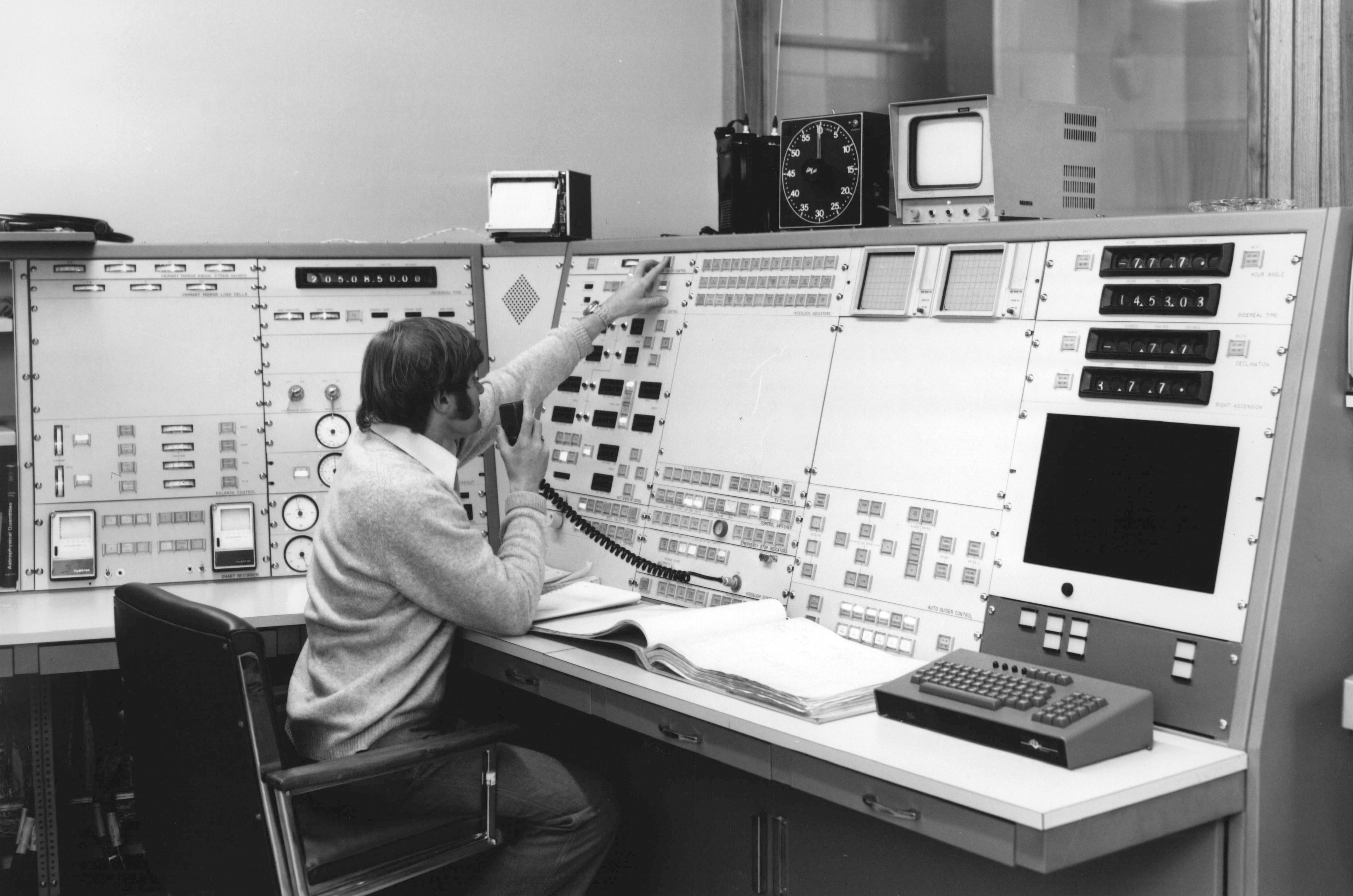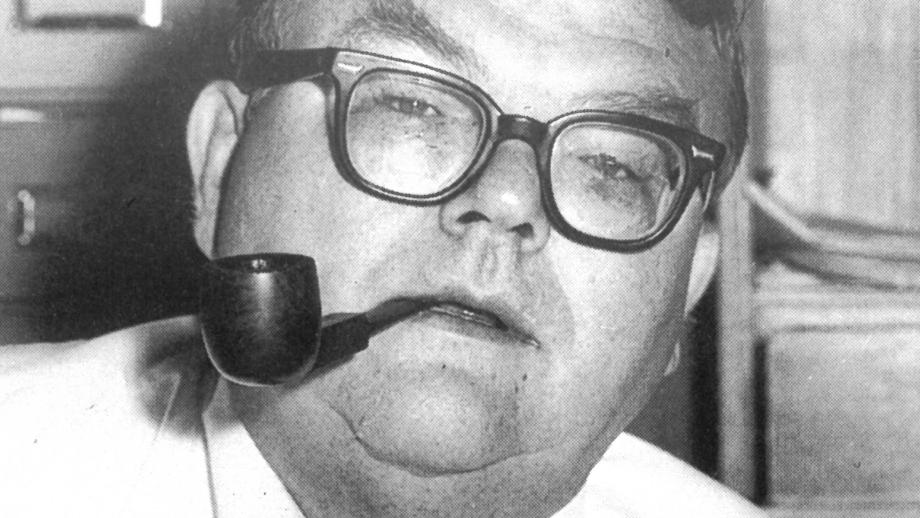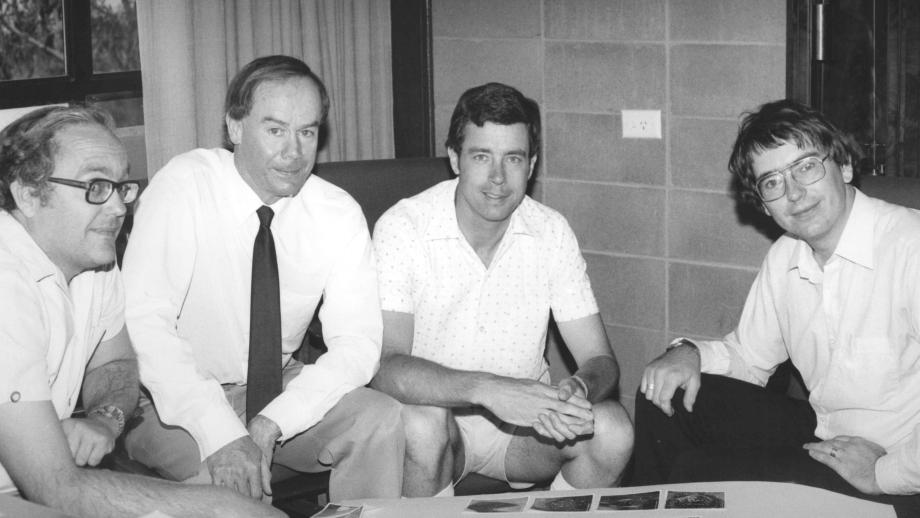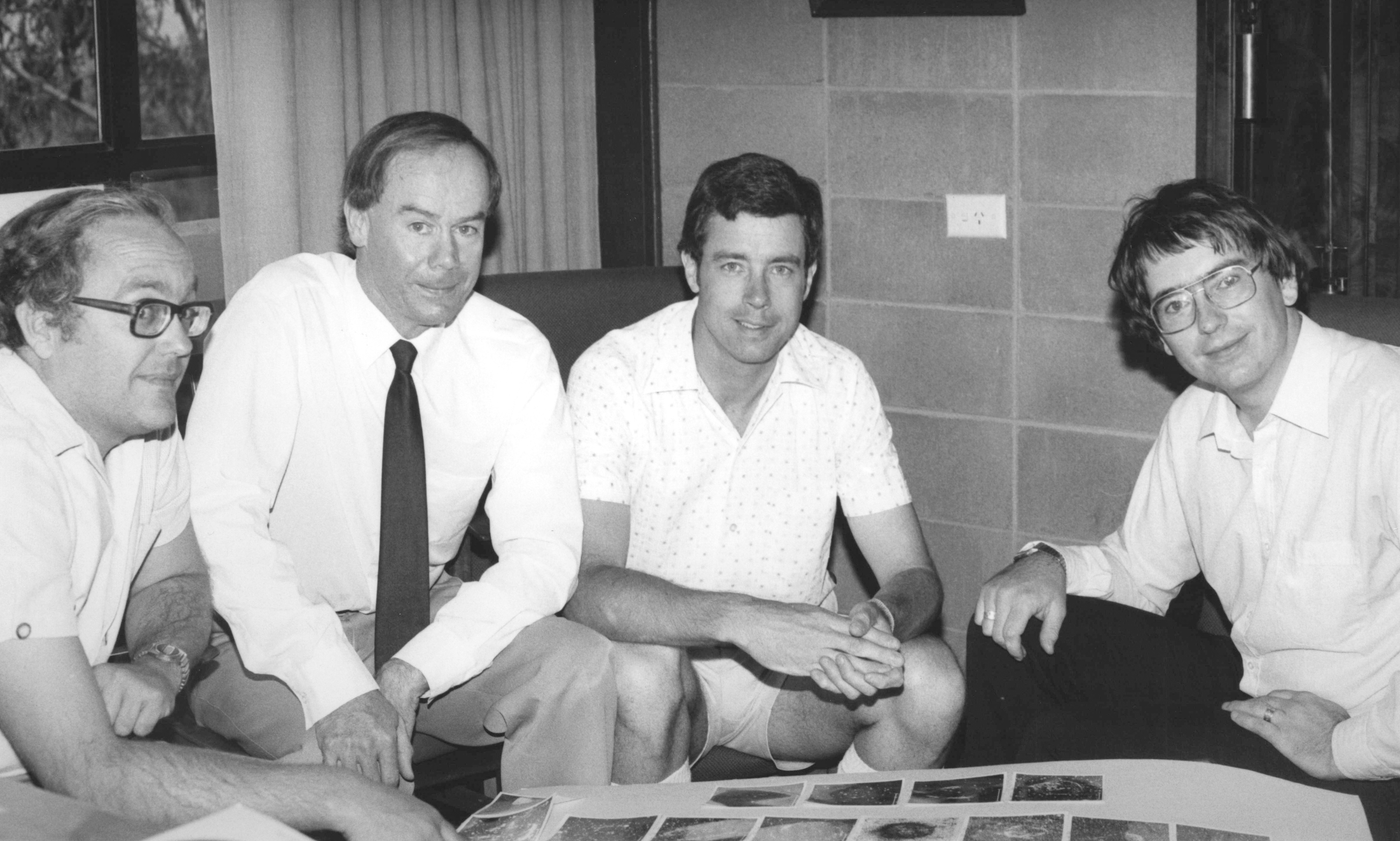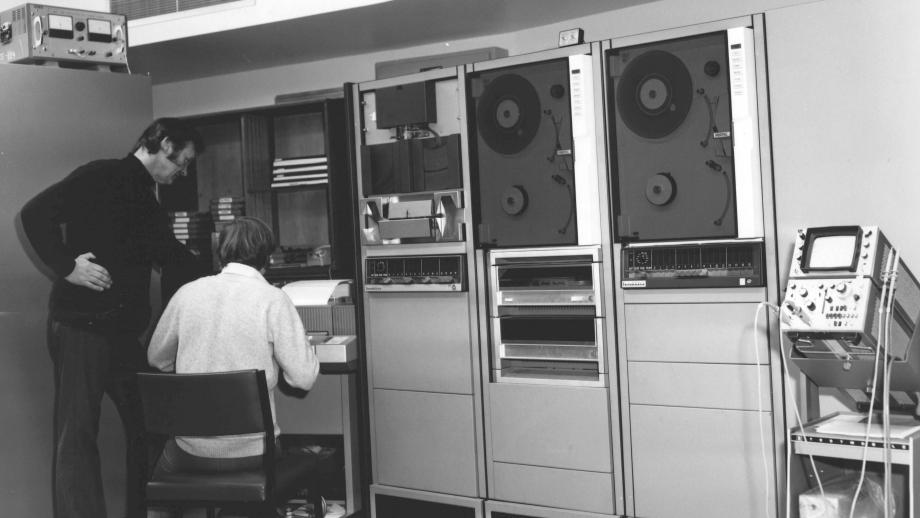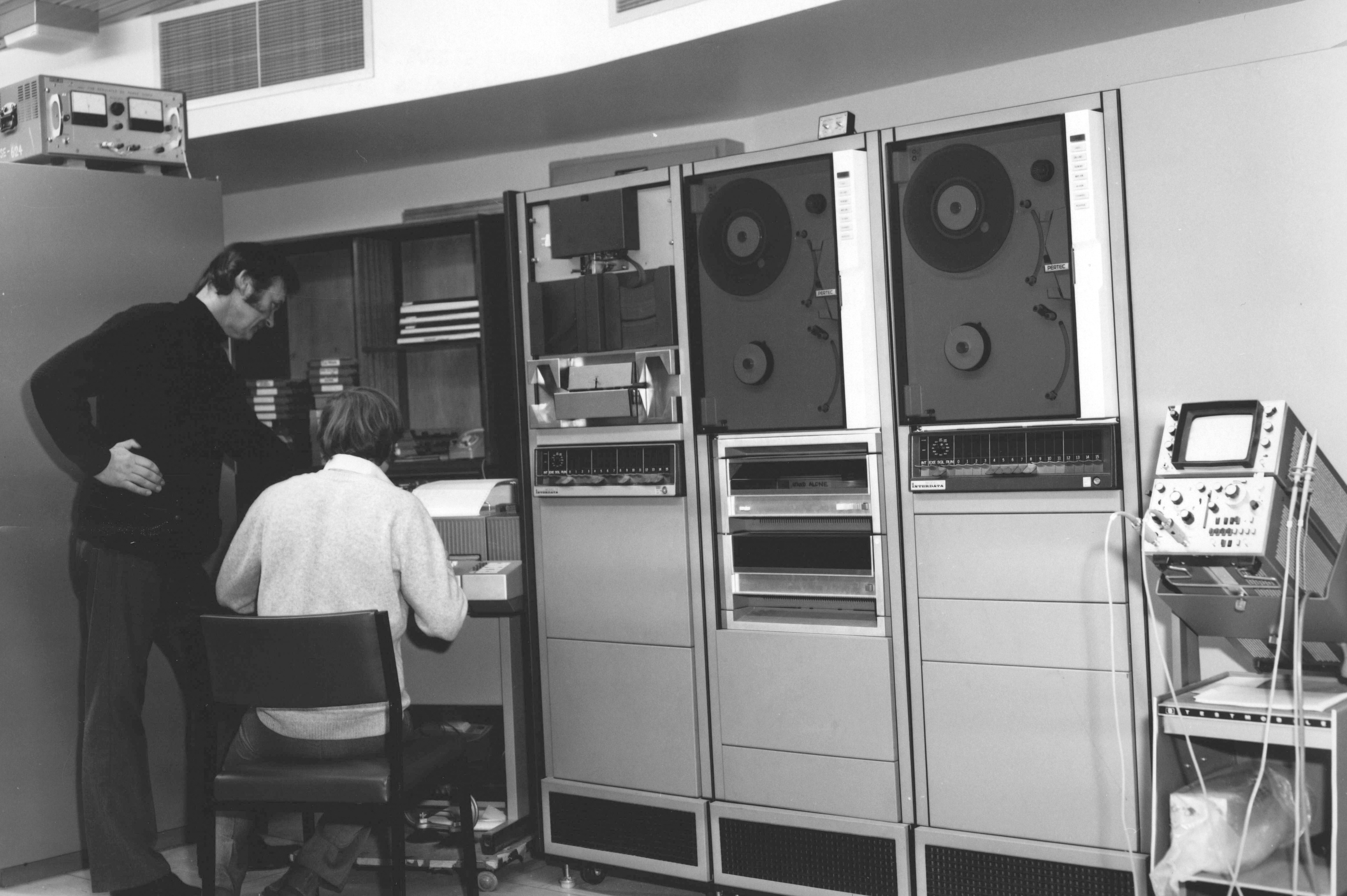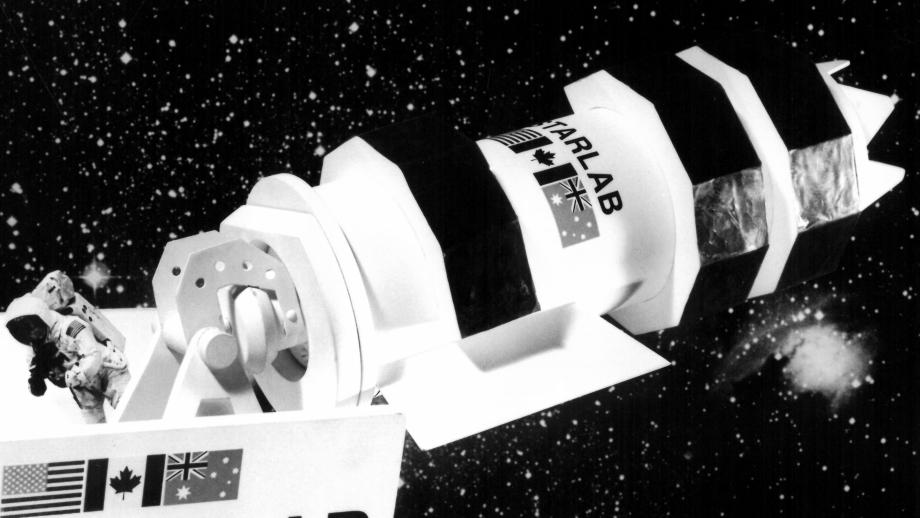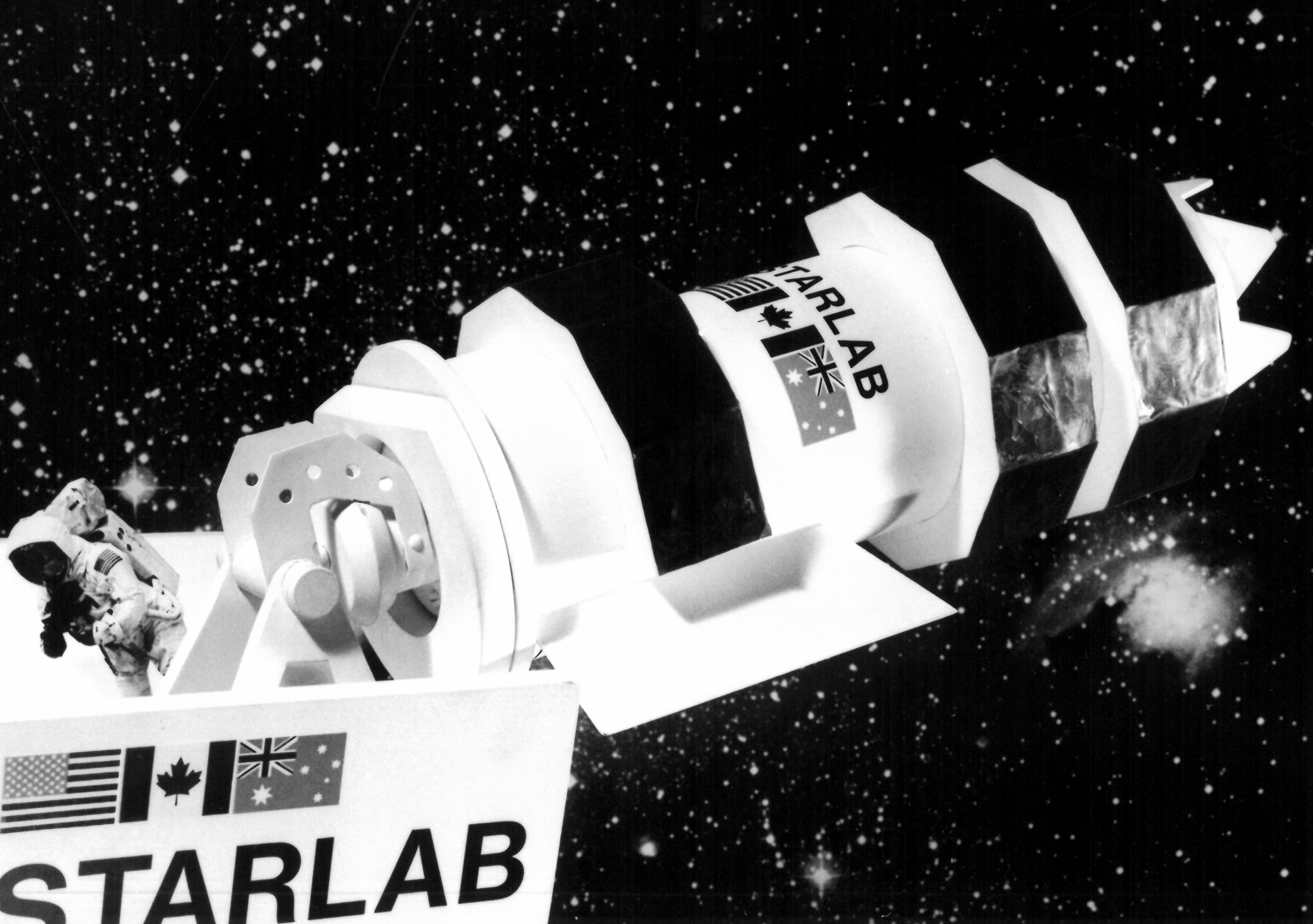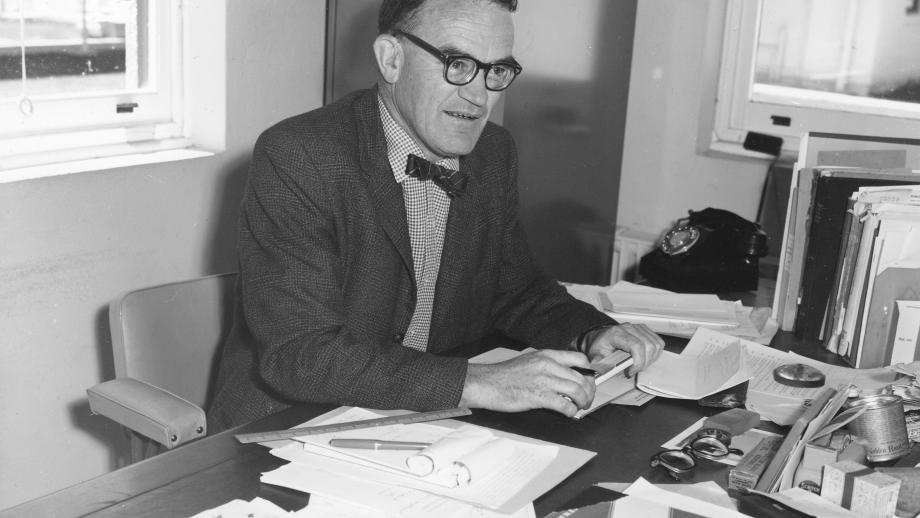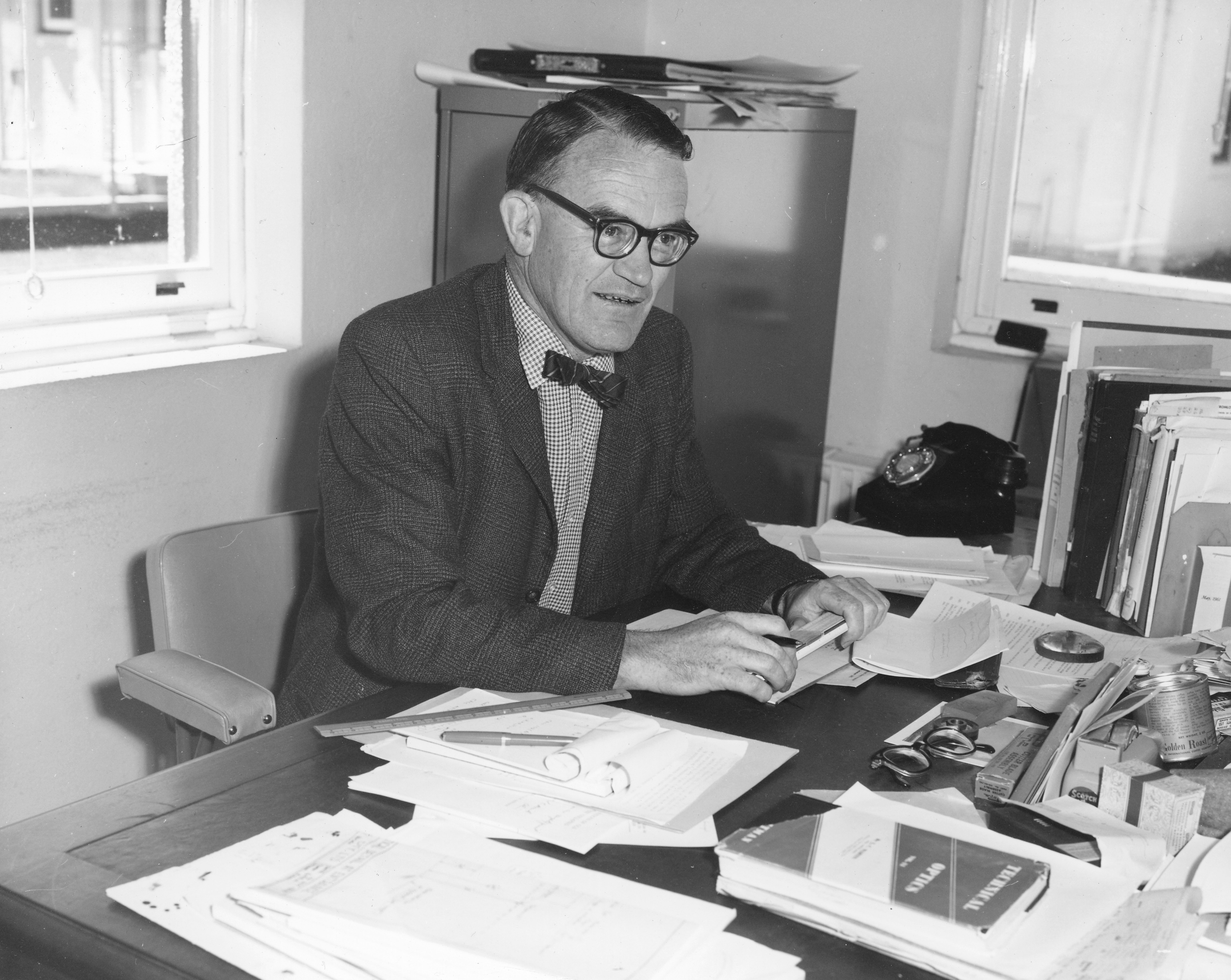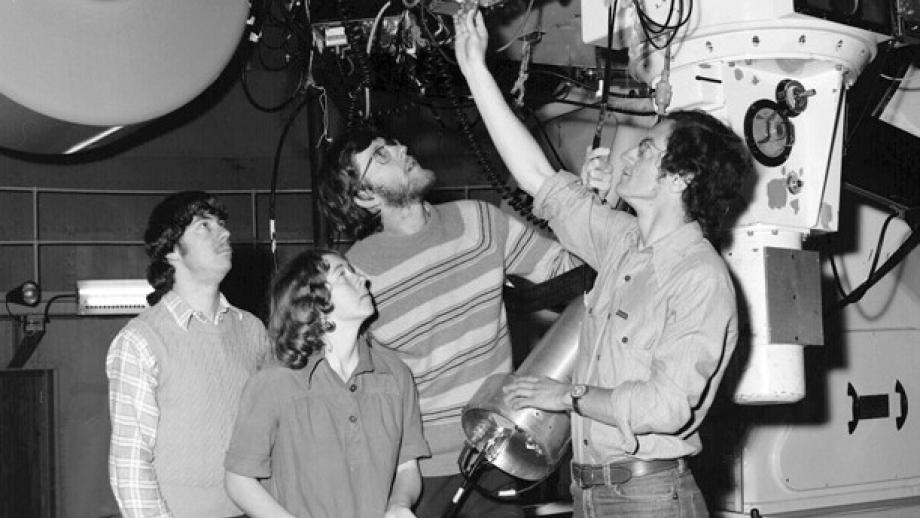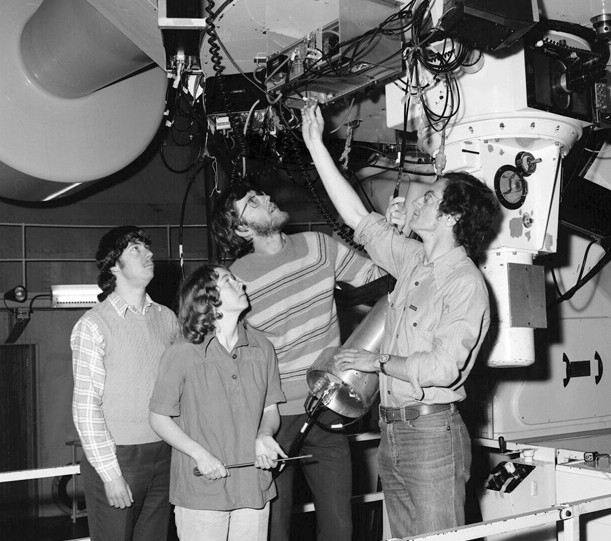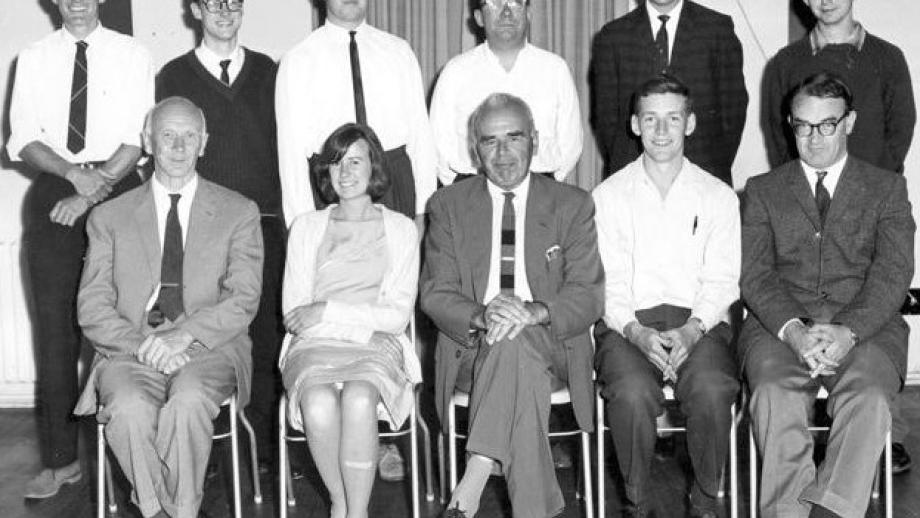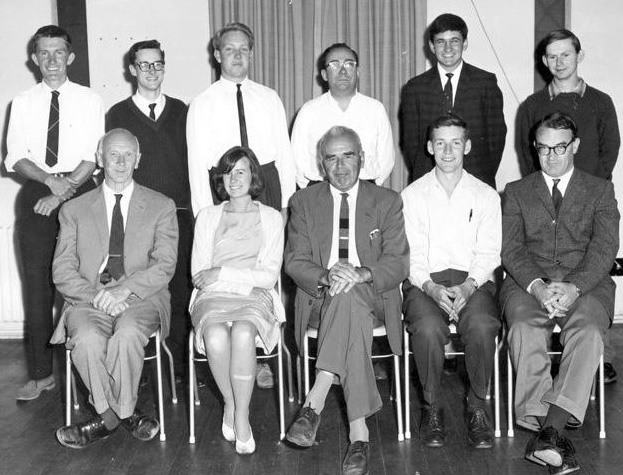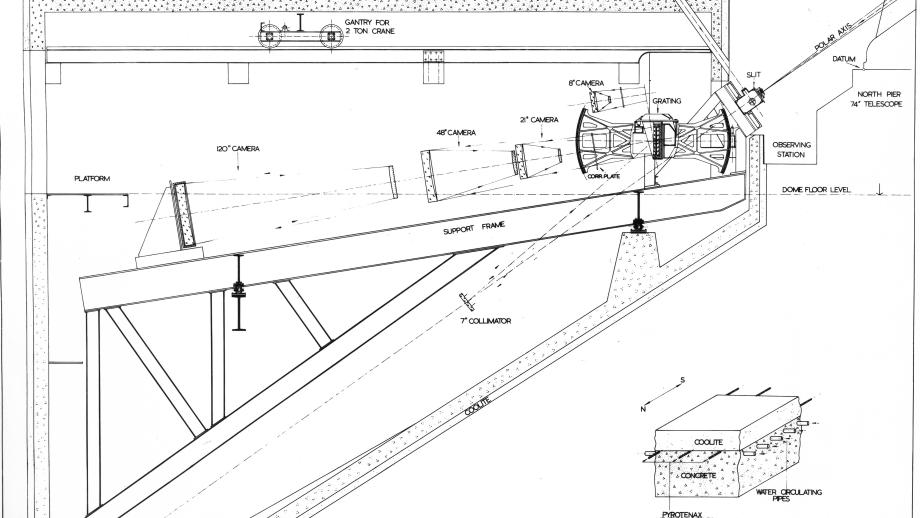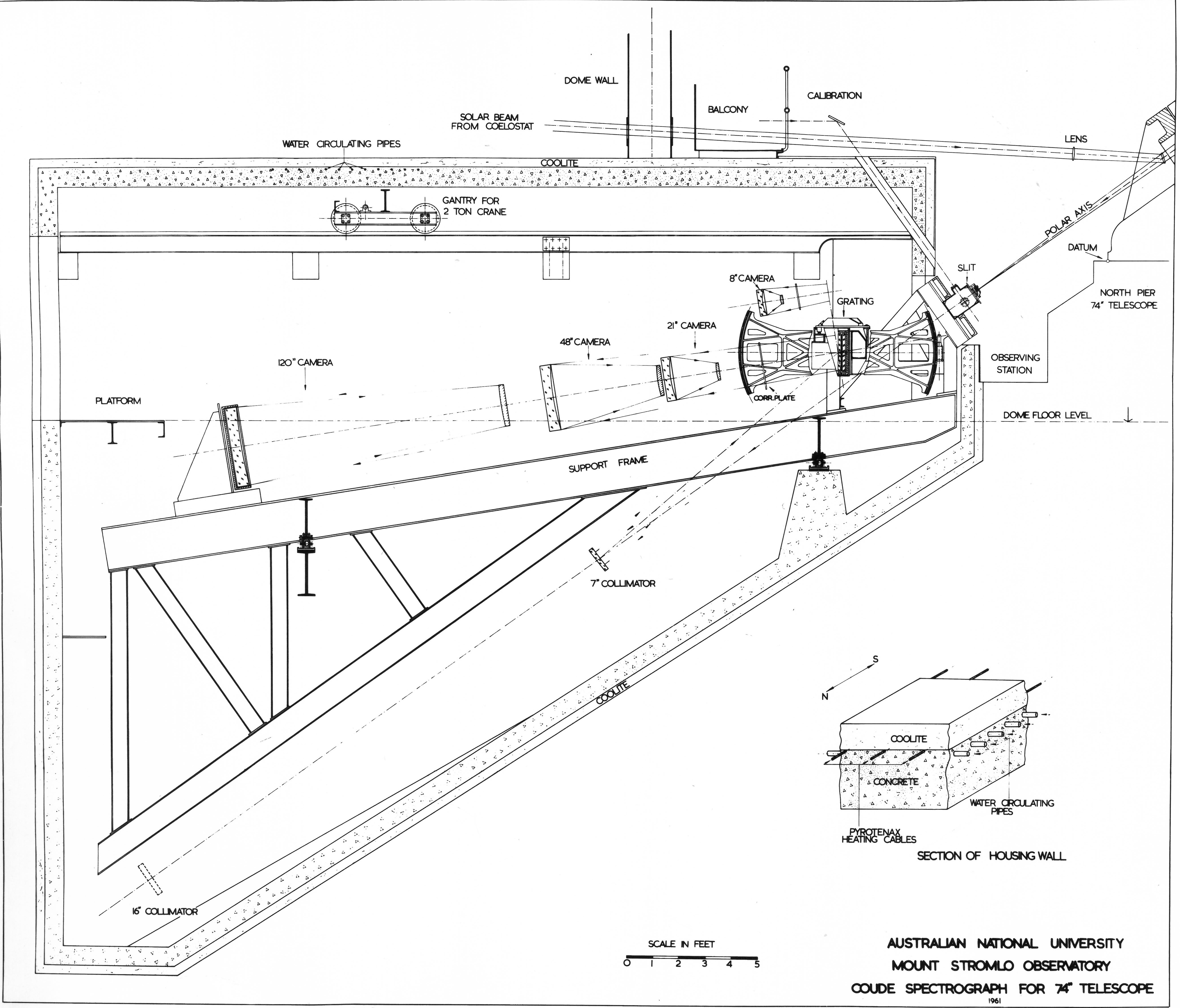Following Bart Bok’s resignation as Director, astronomer Olin Eggen was invited to fill the position in July 1966. Eggen had been the favoured choice of former Director Richard van der Riet Woolley, but Bok had been chosen instead. It was now Eggen’s turn to lead the teams at Stromlo and Siding Spring.
Eggen was described by Woolley as “the classic example of a scientific nomad who moved easily not only from one institution to another but from one continent to another. He was a man for all seasons” (Bhathal, Sutherland & Butcher, 2014). Eggen had vast experience not only at Stromlo but at observatories in Britain, the United States, South Africa and Chile. His area of expertise was the motions, ages and compositions of stars in the Milky Way and a paper he wrote on the formation of the Milky Way with Allan Sandage and Donald Lynden-Bell is considered one of the most influential astrophysics papers ever written (Bhathal, Sutherland & Butcher, 2014).
Eggen preferred to focus on astronomical research rather than administrative tasks, so much of the latter was managed by Alexander Rodgers and Don Mathewson, who would both later serve as directors of the Observatory. In the eleven years Eggen was Director he published an extraordinary 99 papers, with the output of the Stromlo team jumping from approximately 18 published papers per year to 40 (Bhathal, Sutherland & Butcher, 2014). Eggen appointed several new astronomers during his tenure including Ken Freeman, Mike Bessell, Don Faulkner, Harry Hyland, John Norris, Agris Kalnajs, Mike Dopita, Bruce Peterson, Peter Wood, and Visvanathan whose work lifted the profile and reputation of the Observatory.
Director Olin Eggen resigned in 1977 and was replaced by Don Mathewson, who was appointed director in April 1979, becoming the first Australian Director since Walter Duffield in the 1920s. His career began in the CSIRO Radiophysics Division in 1955 before he completed his PhD at the University of Manchester and undertook research that resulted in the discovery of the Magellanic Stream.
Under Mathewson’s directorship, Stromlo researchers focused on stellar astronomy, the evolution of stars and determination of the Hubble Constant. Dr Ragbir Bathal described Mathewson as “largely responsible for taking Australia into the Space Age” (ANU Research School of Astronomy & Astrophysics, 2017). The Observatory’s reputation continued to grow, as did the number of PhD students, which numbered 30 within a few years of Mathewson’s tenure.
One of the lasting legacies of Mathewson’s directorship was the establishment of the 2.3 metre Advanced Technology Telescope (ATT), which was largely designed and constructed by the engineering and technical staff at Stromlo including John Hart, Gary Hovey, Herman Wehner, Ted Stapinski, Jan van Harmelen and Hilton Lewis. The ATT was officially opened by Prime Minister Bob Hawke in 1984 and became a fundamental observational tool. It was highly innovative in so far as being the first telescope to combine alt-azimuth, thin mirror and rotating building components in a single instrument (Bhathal, Sutherland & Butcher, 2014). Later additions to the ATT included the Cryogenic Array Spectrograph (CASPIR), designed by Peter McGregor, which facilitated the capture of images showing the collision between Jupiter and the Shoemaker-Levy 9 comet.
Another significant development during Don Mathewson’s directorship was the Observatory partnering with NASA’s STARLAB project. As part of the project, a team of 15 Australian engineers and technicians would be responsible for the instrument package, with a team in Canada responsible for building the telescope and NASA responsible for developing the Space Platform (Bhathal, Sutherland & Butcher, 2014). Mathewson convinced the Australian Government to provide $3 million funding and enticed involvement from Hawker de Havilland and SA Matra to form Australia’s first space company, Auspace. Unfortunately, just as the project was about to make pace, Canada withdrew its involvement and STARLAB was over before it barely began.
Mathewson resigned as Director in 1986 but continued his research work on spiral galaxies and served as Vice-President of the International Astronomical Union from 1992 to 1997.

